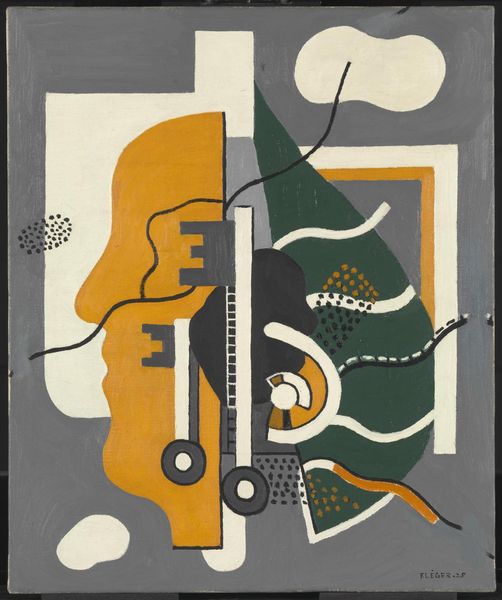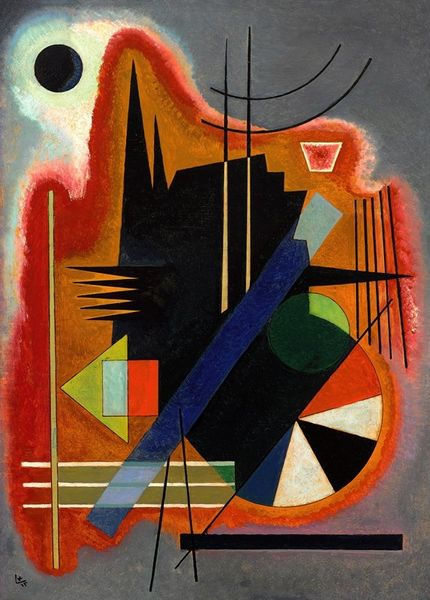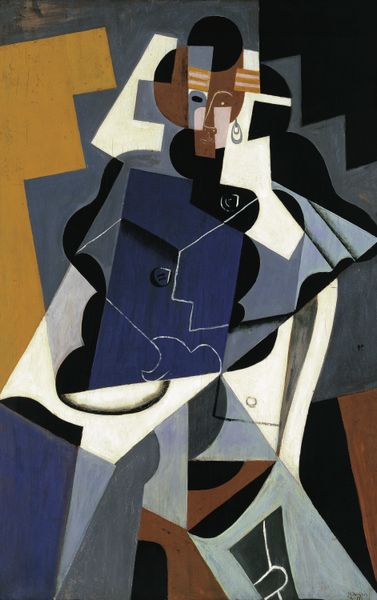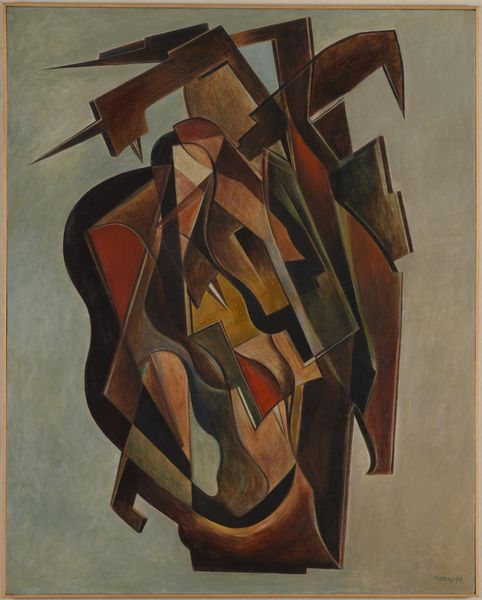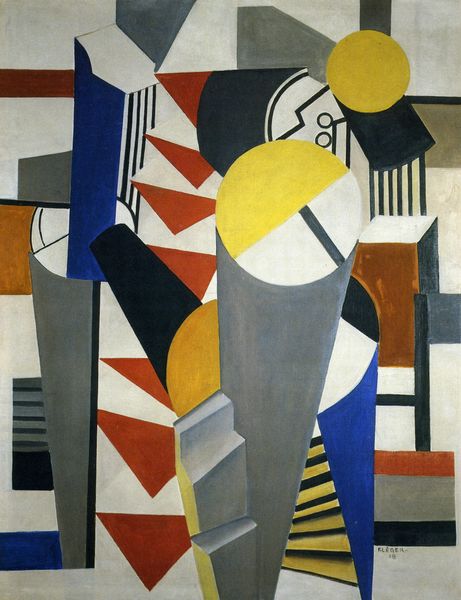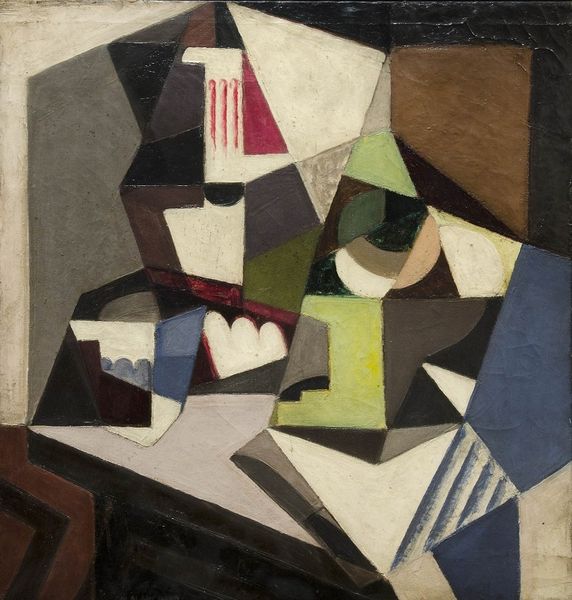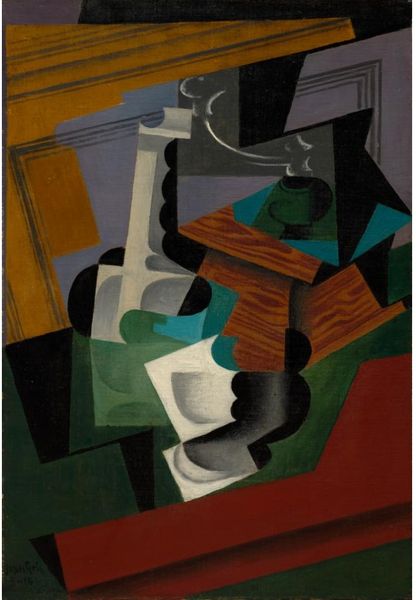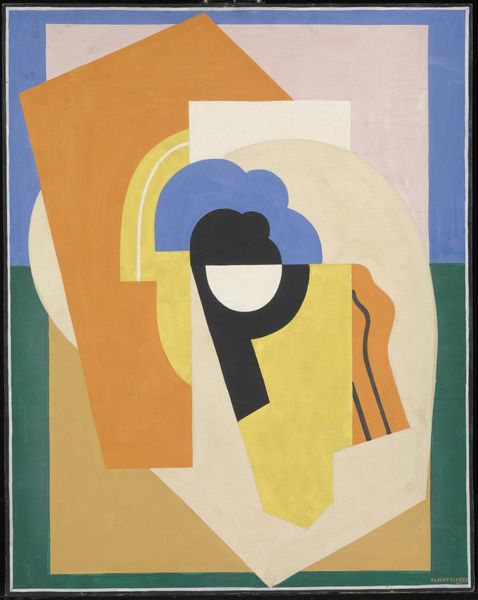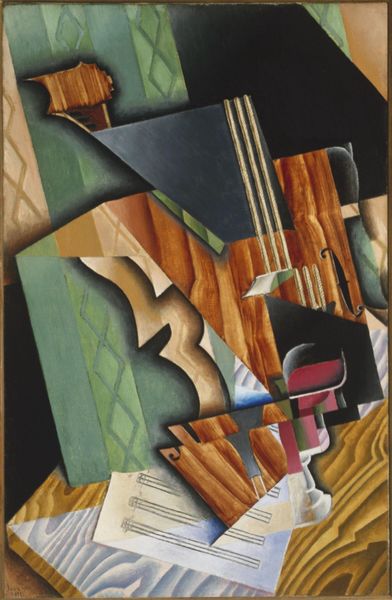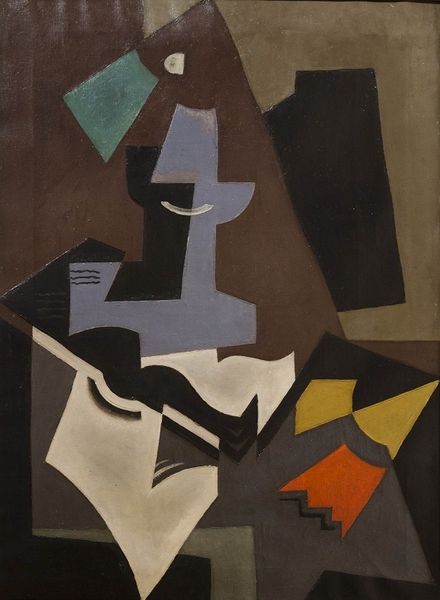
painting, oil-paint
#
cubism
#
painting
#
oil-paint
#
geometric
#
abstraction
#
cubism
Copyright: Albert Gleizes,Fair Use
Editor: So, this is “On a Sailboat” by Albert Gleizes, an oil painting in a Cubist style. Looking at it, I'm struck by how fragmented everything is, yet somehow still conveys a sense of movement. What do you see in this piece, looking beyond the obvious geometric shapes? Curator: The interesting element for me lies in that fragmented reality that you've noticed. Consider how the symbols related to sailing—the sails, the ropes, even the suggestion of water—are depicted not as concrete objects but as impressions. In this light, do you feel it successfully captures the essence of sailing more than a realistic representation would? Editor: I think it does! The abstraction pushes the viewer to fill in the gaps and become a participant in the experience. Is that linked to how Cubism challenges traditional perspectives? Curator: Precisely! Gleizes isn’t merely deconstructing forms; he's building a new visual language. The circular composition could symbolize the cyclical nature of the sea, while the juxtaposition of light and dark shapes could represent the interplay of sun and shadow on the water. Every choice conveys something. Editor: That’s a very powerful observation! Is it fair to consider that, through these symbols, Gleizes connects with fundamental, enduring human experiences? Curator: Exactly. Symbols act as visual shorthand, connecting the viewer to a broader cultural memory. By abstracting the sailboat, Gleizes makes us think not just about the act of sailing, but the adventure, freedom, and perhaps even the challenges that come with it. Ultimately, “On a Sailboat” utilizes symbols to explore not the subject of sailing but also of human endeavor and aspiration itself. Editor: I never thought I'd be able to perceive sailing like that just by considering shapes! Curator: Cubism invites that! It urges us to see how enduring symbols inform the present. It certainly gives me much to consider myself!
Comments
No comments
Be the first to comment and join the conversation on the ultimate creative platform.

